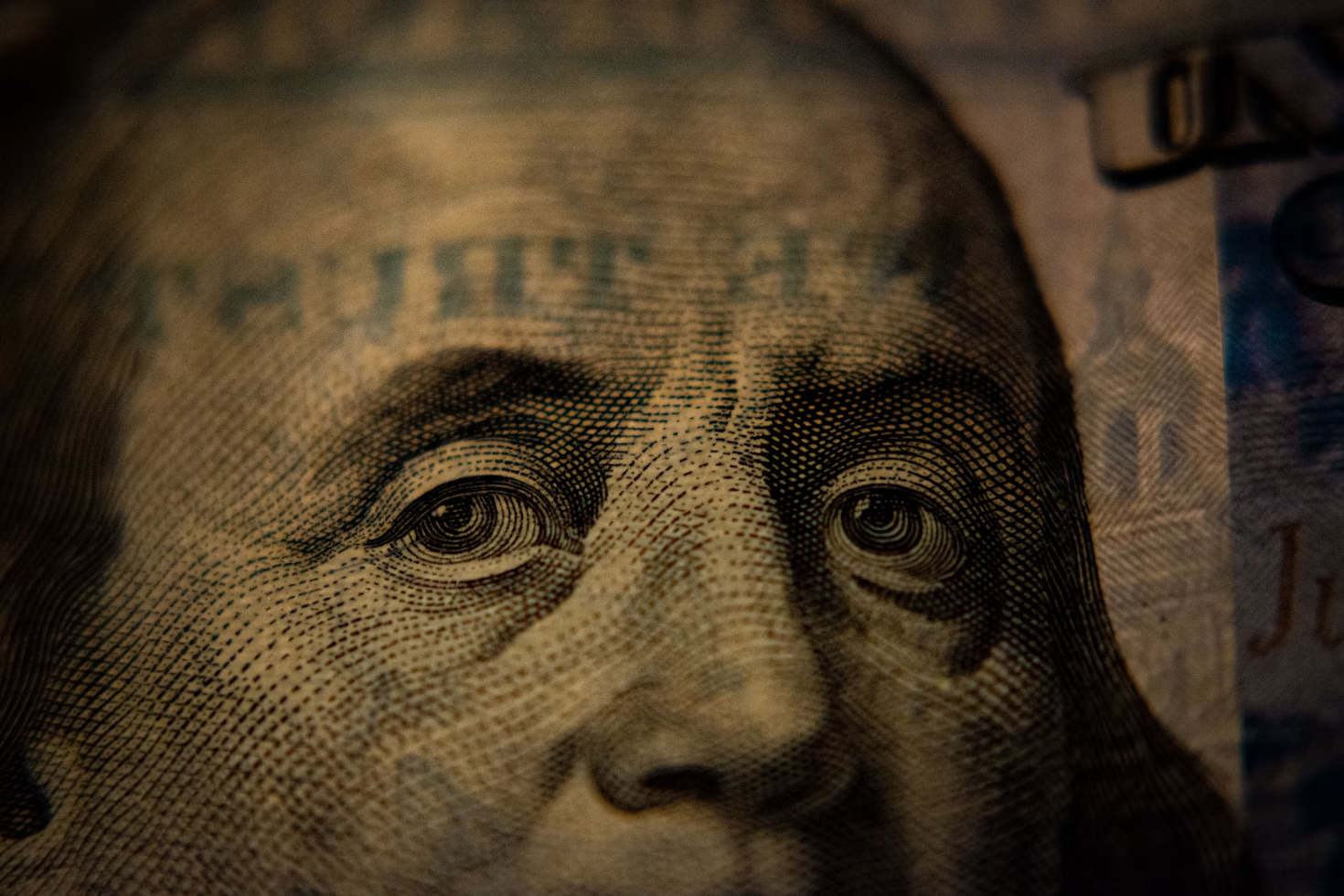De-dollarization: is the dollar shaking on its throne?

In the middle of 2025, one question is shaking global markets: is the American dollar (USD), the undisputed king of currencies for decades, losing its crown?
Since the start of 2025, the USD has lost more than 10% against other major currencies. The American dollar is seeing its safe haven called into question, with a gold rush by central banks and the meteoric rise of cryptos. American treasury bonds, once pillars of global finance, continue to lose value, in the face of the overwhelming debt of the United States, which amounts to 37 trillion dollars (120% of GDP) and an annual fiscal deficit of 2 trillion dollars (7% of GDP).
La De-dollarization, this phenomenon of reducing dependence on the dollar in global transactions and reserves, is gaining momentum. But where does this trend come from? Why is it accelerating now? And what does it mean for international trade, especially for SMEs like you? Let's dive into this currency revolution with Keewe to unravel what's true from what's false.
Where does this de-dollarizing wave come from?
The USD became the world reserve currency after the Second World War with the Bretton Woods agreements (1944). Anchored in gold, its status is strengthened with the global economic dominance of the United States. But in 1971, Nixon abandoned the gold standard, leaving the dollar to float on confidence in the American economy. For decades, it worked: in 2000, the USD represented 70% of global reserves (Bank for International Settlements, BIS).
However, cracks appeared. The 2008 crisis sowed doubt, sanctions against Iran (2010) and Russia (2014) irritated, and the freezing of $300 billion in Russian reserves in 2022 was the last straw. Nations are asking themselves: what if the USD became too risky a weapon?
Why is this trend accelerating in 2025?
Several factors, amplified by recent events, are propelling de-dollarization.
First of all, the unilateral sanctions from the United States. According to Bloomberg (May 2025), China and Russia now carry out 55% of their trade in yuan, fleeing from a dollar perceived as a sword of Damocles.
Then, the Rise of emerging economies: the BRICS (Brazil, Russia, India, India, China, South Africa) account for 26% of global GDP (IMF, 2024) and want their say.
Add it currency volatility : the Fed's rate hikes (5.5% in 2023) have caused the USD's share in reserves to 58% (BIS, April 2025).
But what's new in 2025 is adding fuel. THELack of support from gold since 1971 has made the dollar vulnerable, a point raised by Financial Times (June 2025). THEUS inflation, at 2.5% in May 2025 (Reuters), is eating away at its value.
La American debt, which exceeds 37.5 trillion USD (Financial Times, June 10, 2025), worries investors. Moody's even downgraded the outlook for US debt to “negative” in March 2025 (The Edge), signaling a plummeting quality.
And what about the Trump's erratic policies ? Its “Liberation Day” tariffs (10-20% on imports, Financial Times, June 8, 2025) weakened the dollar, causing it to plunge to 1.15 USD/EUR (Bloomberg, May 23, 2025). These shocks are pushing countries to diversify their currencies faster than ever.
How does this de-dollarization occur?
De-dollarization is no longer a theory: it is happening. Central banks are filling their coffers withgold, reflecting a growing distrust of the dollar and fiat currencies. According to Bloomberg (June 10, 2025), central banks' global gold reserves increased by 483 tons in the first quarter of 2025, driven by Russia (24% of its reserves, Reuters, April 2025) and China, which added 90 tons in May (Financial Times, June 9, 2025).
In addition, China and Russia barter 55% of their trade in yuan (Bloomberg, May 2025), while India pays for Iranian oil in rupees.
Alternative systems like the SPFS Russian (22% of members' transactions, Financial Times, June 2025) and the CIPS Chinese (17%) are gradually replacing SWIFT. Even the Cryptocurrencies are invited: in Venezuela, Bitcoin covers 6% of transactions (The Edge, May 2025). A silent revolution, but very real.
What is the impact on international trade?
For businesses, it's an earthquake. With 40% of global payments still in USD (SWIFT, May 2025), de-dollarization is complicating international transfers.
Les exchange rate are becoming more volatile: converting dollars into euros or yuan is more expensive and requires careful planning. SMEs, which often depend on transfers in foreign currency, have to juggle with futures to protect themselves, a logistical challenge.
But this transition also opens doors: China is strengthening its trade via the Belt and Road, offering new opportunities to emerging markets. However, the transition costs are heavy, especially for small players.
And tomorrow? What are the scenarios for the dollar?
The dollar remains the king, with 58% of the world's reserves (BRI, 2025), but its throne is wavering.
Here are three scenarios:
Progressive rebalancing : The USD falls to 50% by 2030, the euro rises to 25%, the yuan to 10%, and gold to 15% (Bloomberg, June 2025). A soft adjustment, supported by bilateral agreements.
Sudden crisis : A crisis (new sanctions, collapse in confidence) could bring the USD back to 40% by 2027, triggering crazy volatility (Reuters, May 2025).
Multipolar refocusing : A system with the euro, the yuan, and theDigital euro (tested in 2025, Financial Times) to 45% for USD by 2030.
Can the dollar remain the reserve currency?
Yes, but with caveats. The depth of the American markets and the American economic power support the USD. However, its gigantic debt (37.5 trillion USD) and recent tax and customs announcements undermine its credibility. If the dollar loses its status, US inflation could jump to 10% (Goldman Sachs, 2025), making imports overpriced.
Global businesses should rethink their international trade payment methods, in the face of exchange rate unstable. An abrupt transition would be chaotic, but a total withdrawal seems unlikely in the short term.
Who could take over?
Euro : With 22% of reserves (ECB, 2025) and theDigital euro, it is a serious competitor, reinforced by European stability.
yuan : At 3%, it is growing thanks to China, but its limited convertibility is holding back its growth (Bloomberg, May 2025).
Gold and cryptocurrencies : Gold (24% of Russian reserves) and Bitcoin (6% in Venezuela) are gaining ground as safe havens.
BRICS currency : A currency backed by gold, discussed in Kazan (Financial Times, June 2025), remains speculative.
Conclusion
At this point, the dollar is still dominating, but its share will decrease. The most likely scenario? One gradual rebalancing to 50% by 2030, with the euro and yuan taking ground. A total fall is unlikely without a universal alternative, but Trump's policies and US debt could accelerate a multipolar refocusing.
For SMEs, it's an opportunity: adapt with tools like Keewe. Our solutions simplify your transfers in foreign currency, manage the risks of Forex, and help you navigate this new world. Ready to turn this challenge into an advantage? Discover Keewe and stay in control of your international payments!







